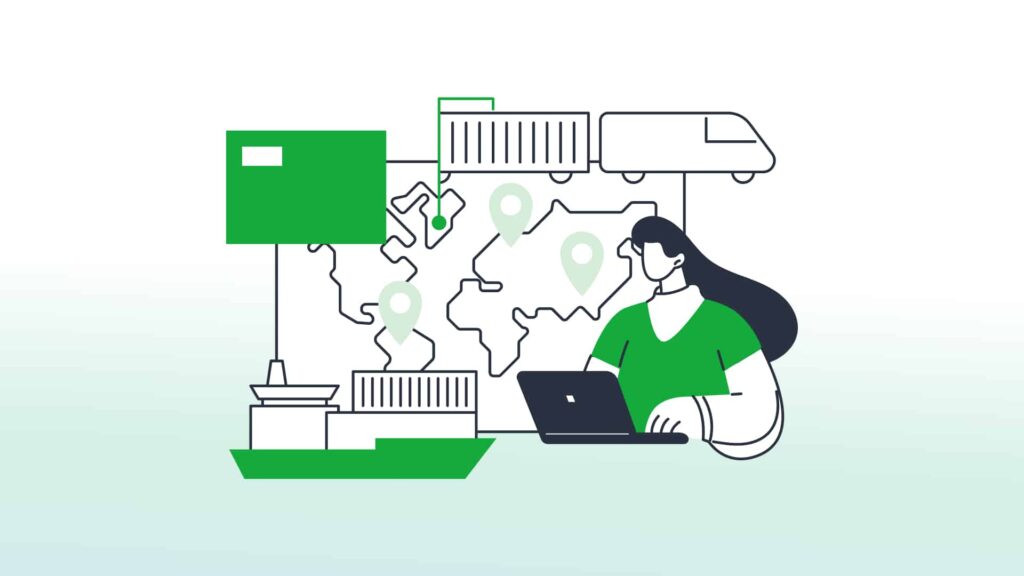They say labels are for soup cans, but, when it comes to running an ecommerce company, it’s important to know where your business model falls under. In fact, that’s one of the first considerations you should be making when coming up with a killer business plan. Then, with a concrete strategy by your side, fine-tuning the details becomes a whole lot easier.
If endless acronyms and shorthand have confused you in the past, allow us to lift the fog and give you a comprehensive breakdown of the ecommerce infrastructure, from general classifications to specific business models. Let’s get started!
Ecommerce Business Classifications
Direct-to-Consumer (D2C)
When people think of ecommerce, they’re often thinking about the D2C, or direct-to-consumer, approach. D2C is pretty straightforward, and involves companies selling to customers without a middleman. Dollar Shave Club, Warby Parker, and Glossier are all standout examples of D2C and the kind of success it can bring. If you love establishing a personal connection and honing in on key demographics, D2C is the place to be.
Business-to-Business (B2B)
Have you ever wondered where cars get their parts? Hint: it’s not from Amazon or Etsy. For the heavy-duty stuff, like supplying an entire business with essential machinery and equipment, companies rely on other companies to get the job done — this is known as B2B, or business-to-business. If your focus lies in crafting advantageous, symbiotic relationships and creating actionable components, B2B will likely be your preferred strategy.
Consumer-to-Business (C2B)
With C2B, or consumer-to-business, customers are put in the driver’s seat by providing value to a business. Think affiliate marketing, freelancing, and paid testimonials. Although quite different from D2C and B2B, the C2B tactic can work in tandem with existing marketing efforts for a more fleshed out experience.
Consumer-to-Consumer (C2C)
The least formal of ecommerce classifications, C2C, or consumer-to-consumer, enables customers to sell and trade with a relative degree of privacy. Newspaper classifieds, Facebook Marketplace, and eBay are all examples of C2C in action. C2C wouldn’t be ideal for building a retail empire, but it can be a great way to expand your network and earn additional income.
Ecommerce Business Models
Private Labeling
White labeling and private labeling often get mixed up, but, for private labeling, exclusivity is the name of the game. The gist here is that a manufacturer will produce unique goods for one particular company, which can modify these goods to suit their brand. Customization and authenticity are prioritized here, but, with that, comes longer production times and higher costs.
White Labeling
Private labeling’s controversial cousin, white labeling is when companies buy the same product and attempt to rebrand it as their own. White label products tend to be generic, and don’t offer as much flexibility as their private label counterparts. With that being said, don’t underestimate the power of branding. Advil is a branded version of ibuprofen, but many people will scoff at generics even when studies show that they’re exactly the same.
Wholesaling
Wholesaling falls under the B2B classification, and you might have already heard about it in a brick-and-mortar context. With wholesaling, a large quantity of goods is bought and sold to be retailed by others at a discount. Wholesalers typically work behind the scenes, which makes it the perfect career choice for mysterious types who want a furtive slice of the ecommerce pie.
Dropshipping
Dropshipping is a hot topic in ecommerce, and for good reason. If you’re not familiar with the talk of the town, dropshipping works like this: seller creates a website, seller lists products for sale, and products are shipped to buyers. The catch? The seller doesn’t actually own any of the inventory – the manufacturer does! This may seem like an excellent scenario for those looking to avoid high overheads, but dropshipping usually comes with longer shipping times and less control over the quality and development of products.
Print-on-Demand
Want to do your own thing? Don’t like being tied down? Unlike dropshipping, print-on-demand allows you to own your inventory, but, instead of storing inventory all at once, items are printed as an order comes in. While simplifying inventory forecasting is a major perk, print-on-demand isn’t possible for specific products, and is best used for things like books and t-shirts.
With so many options to choose from, finding an ecommerce business model that works for you is more than doable. Of course, you can always mix and match. Online retail is constantly changing and evolving, so don’t be afraid of the ebb and flow — embrace it!
Questions? Comments? Let us know! Drop us a line and we’ll get back to you ASAP.
P.S. Liked what you read? Then you’re going to love subscribing to the ShipMonk blog! Get the latest in ecommerce delivered straight to your inbox.





